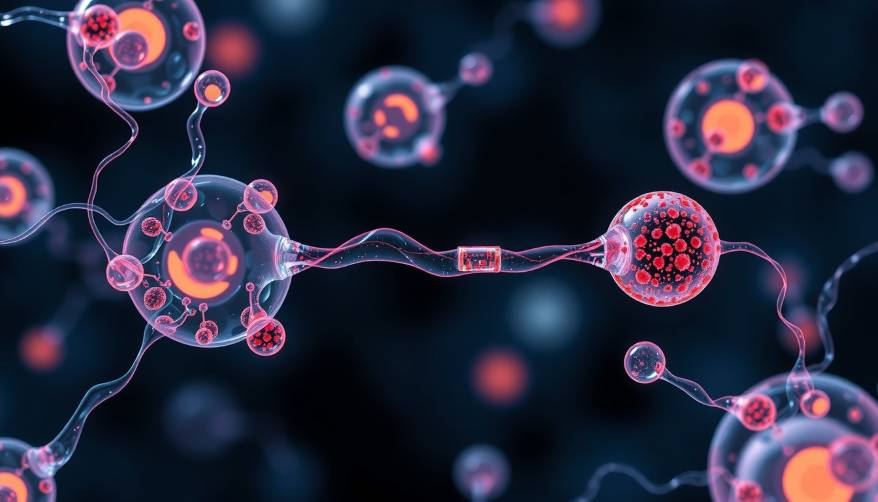E C G Sudarshan and Tachyons
Professor E.C. George Sudarshan was one of India’s most distinguished physicists of the late twentieth century. Born in Kottayam, Kerala, he pursued his education in Kottayam, Chennai, and Mumbai before making groundbreaking contributions to multiple fields, including elementary particle physics, quantum optics, quantum information, quantum field theory, and classical mechanics. With over 500 research papers and 10 books to his name, his work spanned scientific and philosophical domains.. Moreover, he held academic positions at esteemed institutions such as the University of Rochester, Harvard, Syracuse, IISc Bangalore, and IMSc Chennai; his longest tenure—47 years—was at the University of Texas.
Early Life of ECG Sudarshan
Family
ECG Sudarshan was born on September 16, 1931, in Pallam, Kottayam, Kerala, to a Syrian Christian family. His mother, Achamma, was a school teacher. His father, E.I. Chandy, worked as a revenue inspector in the former Travancore state. Sudarshan was the second of three brothers; Joseph and Thomas Alexander were his siblings. In fact, he was raised in a home enriched by a vast collection of Indian classics and an extensive library.
Education
After completing high school, ECG Sudarshan studied at CMS College, Kottayam, and later pursued a B.Sc. (Honors) in Physics at Madras Christian College from 1948 to 1951, staying on as a demonstrator for a year. A natural mathematician, he was curious and self-taught, deriving complex formulas even in middle school.
Furthermore, in 1952, he got a master’s degree (MA) from the University of Madras. Then he went to the Tata Institute of Fundamental Research (TIFR) in Mumbai as a research student. Initially assigned to experimental particle physics, he later transitioned to theoretical work, where his true strengths emerged.
Mentors of ECG Sudarshan
Robert Marshak, a well-known physicist, visited TIFR in 1953. Indeed, he was struck by ECG Sudarshan’s brilliance and invited him to pursue a PhD at the University of Rochester.
Later, in 1954, Paul Dirac, Bhabha’s former mentor, spent six months at TIFR, delivering lectures on quantum mechanics. ECG, tasked with preparing lecture notes, worked closely with Dirac, gaining invaluable insights from the master. Thus, this experience deeply influenced his approach to quantum mechanics, fostering a bold and inquisitive spirit. ECG admired Dirac immensely, and their bond evolved into a lifelong friendship.
Marriage and Name Change from EC George to EC George Sudarshan
In 1954, ECG married Lalita Sreenivasa Rao (who later was known as Dr. Lalita Rau Sudarshan), a fellow student at TIFR with a BSc in Physics and a diploma in instrumentation. Later, she was pursuing a PhD there. Because people with different religions couldn’t marry, ECG converted to Hindu in Nasik. He also chose the name “Sudarshan” and became ECGS.
Soon after, they went to the U.S. to study for graduation at Rochester University. There, Lalita earned an MSc in Chemical Engineering. Later, they settled in Boston. Their first son, Alexander, was born there, followed by Arvind and Ashok in Rochester and Syracuse, respectively. They stayed married until 1989. The next year, ECG wed physicist Gopalakrishnan Bhamathi.
Life in USA
After initial setbacks, ECG Sudarshan secured permission to study at the University of Rochester in 1955, completing his Ph.D. under Robert E. Marshak in two years instead of the expected five. Further, his groundbreaking work with Marshak led to the V-A (Vector-Axial Vector) theory of weak interactions, explaining parity violation in weak forces. Although Feynman and Gell-Mann later reached similar conclusions and gained wider recognition, Feynman acknowledged in 1963 that the theory was originally discovered by Sudarshan and Marshak.
Indian Connection
ECG Sudarshan was invited to establish and direct the Centre for Theoretical Studies (CTS) at IISc while continuing his role at the University of Texas at Austin. CTS aimed to foster research in theoretical sciences, organize seminars, and run a Visiting Scientists Programme. Later in 2004, it was split into the Centre for High Energy Physics and the Centre for Contemporary Studies. In 1985, ECG became the Director of IMSc, significantly expanding its activities until 1990. He was honored with the Padma Bhushan (1976) and Padma Vibhushan (2007) and was elected to the Indian Academy of Sciences (1963) and the Indian National Science Academy (1972).
Tachyon theory
Tachyons are hypothetical particles theorized to travel faster than light, possessing ”imaginary mass”—a concept arising from special relativity rather than implying non-existence. E.C.G. Sudarshan and George Feinberg contributed significantly to the theoretical framework, exploring mathematical consistency and implications of such particles. However, the term ”tachyon” originated from the Greek word “tachy”, meaning ”swift.”
In special relativity, the energy-momentum relation,
E2 = p2c2 + m2c4
yields an imaginary mass for tachyons, challenging conventional notions of space, time, and causality, where E is the energy, p is the momentum, c is the velocity of light, and m0 is the rest mass of the particle. If real, tachyons could enable faster-than-light communication, potentially leading to violations of causality and time paradoxes, making them a fascinating yet speculative topic in theoretical physics.
Tachyon present status
Jerzy Paczos, Kacper Debski, and others put out a paper in Physical Review D (Vol. 110, 015006) on July 9, 2024. It was called “Covariant Quantum Field Theory of Tachyons.”
Therefore, their work made people think again about tachyons. They suggest these particles, which might go faster than light, could fit with Einstein’s special relativity. Specifically, the paper goes against usual ideas about cause and effect and time. Hence, it makes us wonder about how reality is made. Eventually, the writers say that math mistakes cause many problems people see with tachyon theory. If others find their work is right, it could change how we see the rules of physics.
Later Years and Legacy
From around 2010, E.C.G. Sudarshan’s health began to decline, though he had been managing diabetes since 1984. He passed away on May 13, 2018, in Austin, Texas.
Beyond his groundbreaking contributions to physics, Sudarshan was a thinker with remarkably broad intellectual curiosity. Moreover, he was known for engaging with diverse subjects, from applying operations research to improve Indian railways to exploring profound philosophical questions. In his later years, he became increasingly immersed in Vedantic philosophy, reflecting his deep interest in the fundamental nature of reality. His legacy extends beyond science, embodying a lifelong pursuit of knowledge across multiple disciplines.
References
- Sheldon Lee Glashow “My memories of E. C. G. (George) Sudarshan”, CURRENT SCIENCE, VOL. 116, NO. 2, 25 JANUARY 2019
- S. K. Bose, A tribute to George Sudarshan CURRENT SCIENCE, VOL. 116, NO. 2, 207-210, 25 JANUARY 2019
- Anil Shaji, Deep insights hidden in beautiful metaphors –remembering
- E. C. G. Sudarshan, CURRENT SCIENCE, VOL. 116, NO. 2,227-228, 25 JANUARY 2019
- E.C.G. Sudarshan and T.N. Sherry, ”Beyond Quantum Mechanics: Einstein, Podolsky, and Rosen—A Paradox Reconsidered”, Founda- tions of Physics, Vol. 28, Issue 10, 1998, pp. 1525–1533.
- E.C.G. Sudarshan, ”The Theory of the Quantum Measurement Pro- cess”, Foundations of Physics, Vol. 8, No. 1, 1978, pp. 1–12.
- E.C.G. Sudarshan, ”Quantum Zeno and Anti-Zeno Paradoxes”, Jour- nal of Statistical Physics, Vol. 53, Issues 5–6, 1988, pp. 925–933.
- E.C.G. Sudarshan, ”Symmetries and Reality in Physics” edited by Katherine Brading and Elena Castellani, Cambridge University Press, 2003, pp. 177-189.
- B.V. Sreekantan and G. V. Vijayakumar (Eds.), ”Ennackal Chandy George Sudarshan: Selected Scientific Papers with Commentaries” (World Scientific, 2019)
- Misra, B., & Sudarshan, E. C. G. (1977). The Zeno’s paradox in quantum theory. Journal of Mathematical Physics, 18(4), 756–763. https://doi.org/10.1063/1.523304
- Parthasarathy, R. (2019). Sudarshan Memorial Lecture. arXiv (Cornell University). https://doi.org/10.48550/arxiv.1907.11423
- Venugopalan, A. (2012). The Quantum Zeno effect — Watched pots in the quantum world. arXiv (Cornell University). https://doi.org/10.48550/arxiv.1211.3498
Additionally, to stay updated with the latest developments in STEM research, visit ENTECH Online. Basically, this is our digital magazine for science, technology, engineering, and mathematics. Furthermore, at ENTECH Online, you’ll find a wealth of information.
Courtesy
The photographs used in this article were provided by Vinayak Jagdish of Jagiellonian University, Poland, a member of the editorial team of Quanta, an academic journal. Therefore, these images are used without any copyright issues.


